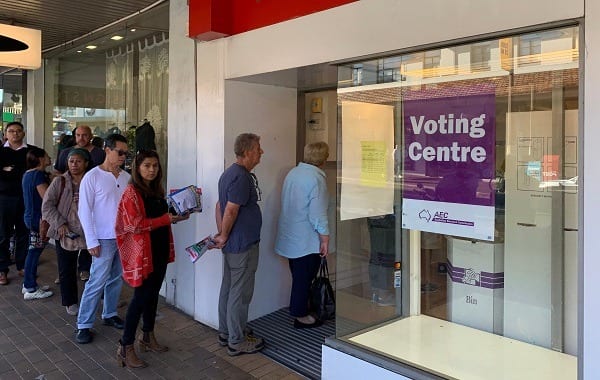Both theories sound wrong because they are. This election was decided by an issue given basically no airtime during the election – racism. But the role of race is far more complex than it seems on the surface.
The burgeoning influence of Australia’s ‘rust belt’
So far, we know gains in Queensland and Tasmania won the Coalition the election. But the logic across social media that I’ve seen – that these states voted for the Coalition because they’re filled with hard-right bigots – is a dangerous and oversimplified misdiagnosis.
Both are traditional Labor states, that have political histories driven by workers’ movements. Queensland has been governed by Labor continuously since 1989, but for two terms (1996-1998, and 2012-2015). Tasmania has similarly been near continuously governed by Labor from 1972, but for three spells, including its current Liberal government (1982-1989, and 1992-1998). These voters didn’t decide they suddenly wanted to vote en masse for a federal Coalition government. They voted for fringe, white nationalist parties like United Australia Party (‘UAP’) and One Nation instead.
The ‘deep story’ of racist fears in rural communities
To understand why, it’s important to point out how stark the juxtaposition between the demographics of metropolitan and rural electorates in Australia still is. Only around one in ten people in small towns were born overseas, compared to one in three in major cities. The proportion of migrant arrivals in small towns has also severely declined. Of those who arrived between 1900-1945, 8.6% lived in small towns. Between 2006-2015, that fell to just 2.8%. These communities are also more working-class, with fewer tertiary-educated residents.
In this demographic context, US author Arlie Russell Hochschild, and Australian author Gabrielle Chan, have some fascinating (if alarming) theories about why rural electorates have deserted major parties.
There is what Hochschild calls a ‘deep story’ that underpins why these rural electorates have increasingly turned to white nationalist parties. She characterises this story as one ‘in which you lift away facts and moral judgment and just find a story that feels true.’
Hochschild and Chan’s studies concur that rural communities feel forgotten, displaced, and disadvantaged by their government. They believe their culture, and religious (overwhelmingly Christian) beliefs are becoming less valuable because of the multicultural, city-dwelling majority. Through this lens of anxiety, race-baiting falsehoods turn into popularly-held opinion. These electorates feel they are being pushed backwards towards economic disadvantage; while migrants, ethnic minorities, women and asylum seekers are pushed forwards and into economic prosperity. They then conclude cultural and demographic diversity are inextricably linked with their economic plight, and lash out at minorities.
Minor parties’ exploitation of the deep story
In this reality, it becomes a lot harder to continue living in denial, and viewing Hanson and Palmer as incompetent troublemakers whose political impact is limited to causing endless political controversy every time they speak.
Parties like One Nation and the UAP saw increasing disenchantment in rural Australia as an opportunity, and exploited it successfully. These parties have branded themselves as the antidote to the fears in rural Australia’s ‘deep story.’ I believe their minor-party-status was also a key factor in their success because they used the invisibility it gave them as a tool. These parties had time and space to successfully run ethically questionable, but nonetheless strategic campaigns and fundraising efforts, that would be impossible under the intense media and public scrutiny faced by major parties. The recent Al Jazeera documentary exposed they’ll do anything – even trying to obtain funding from the National Rifle Association (‘NRA’).
The election results clearly showcase their success. The Coalition’s primary vote in Queensland barely moved. It was preference flows from UAP and One Nation in Flynn, Capricornia, Dawson, Forde and Petrie that handed these seats to the Coalition. Palmer’s giant election spend makes sense when you realise his money helped enable the racism that determined an election. In Flynn, for example, preferences from UAP helped push the swing to the Coalition from 5.7% to 11.1%.
The same narrative unfurled in Tasmania. Support for One Nation helped depress Labor’s primary vote, and redirect preferences enough to hand Labor-held Braddon over to the Coalition. Similarly, traditional Labor voters who became first-time UAP voters in Bass won it for the Coalition on preferences.
So this election result is spectacular for one reason, and one reason alone. Minor parties managed to so successfully exploit a fundamentally racist narrative about rural disadvantage, that they tipped an election outcome while we were all looking the other way.

